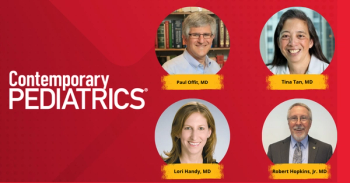
- Consultant for Pediatricians Vol 9 No 2
- Volume 9
- Issue 2
Branchial Cleft Sinus Should Prompt Workup for Potentially Serious Syndrome
I appreciated Dr Kirk Barber's excellent illustration of a branchial cleft sinus ("Dermclinic," CONSULTANT FOR PEDIATRICIANS, November 2009, page 389).
I appreciated Dr Kirk Barber's excellent illustration of a branchial cleft sinus
It is important that all children who present with branchial cleft anomalies be examined for ear malformations and have audiological testing. Renal ultrasonography should be strongly
considered to check for otherwise hidden renal malformations, which, in the most severe case, might progress to end-stage renal disease. A careful family history and evaluation of the patient's parents can help determine whether BOR syndrome is present. Referral to a medical geneticist can also aid in diagnosis and can ensure appropriate treatment for the entire family. Finally, molecular genetic testing for BOR syndrome is available.
Although rare, BOR syndrome can have important clinical implications, and early diagnosis may play a critical role in ensuring optimal outcomes for affected patients. I would urge readers to keep this condition in mind whenever a patient presents with branchial cleft anomalies.
--Kerry Baldwin Jedele, MD
La Crosse, Wis
I very much appreciate these comments. Our patients and colleagues are our best teachers.
--Kirk Barber, MD, FRCPC
Consultant Dermatologist
Alberta Children's Hospital
Clinical Associate Professor of Medicine
and Community Health Sciences
University of Calgary
Alberta
Articles in this issue
almost 14 years ago
History of Cough in an Infant and a Toddleralmost 16 years ago
Oculo-Auriculo-Vertebral Spectrumalmost 16 years ago
Subclavian Central Venous Catheter Fracture and Embolizationalmost 16 years ago
Bullous Impetigo in a 1-Week-Old Boyalmost 16 years ago
When Lice Won't Leavealmost 16 years ago
Manifestations of Klippel-Trenaunay Syndromealmost 16 years ago
Autism Spectrum Disorders: What to Make of the Latest Statistics?almost 16 years ago
Type 1 Diabetes Mellitus in Children and Adolescents: Part 2, ManagementNewsletter
Access practical, evidence-based guidance to support better care for our youngest patients. Join our email list for the latest clinical updates.







